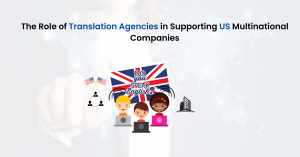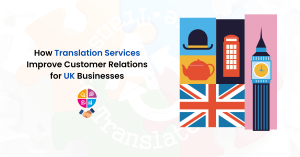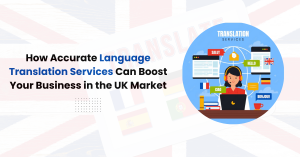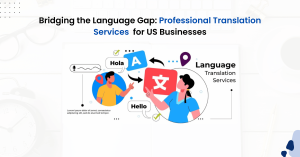Nowadays in order to survive and thrive in a global economy, many companies have realised the need to explore markets for its products and services. Reaching an international audience faces several challenges, including effective communication of your products and services in a foreign language. Being able to adapt your products in the regional culture can greatly affect the success of your company and be a great opportunity to grow and reach potential customers.
Different countries are related to different people and different cultures. Expanding your operations in an international territory entails defining your audience and setting a clear goal of what you want to achieve. But let’s think about how difficult it is to engage people from another nationality, mentality and language?
If you have already started to implement your strategy for a global audience, these 5 steps will make your life easier.
1) Get to know your potential clients:
People buy from people they know, like and trust. When deciding to expand overseas, bear in mind that you need to learn more about your prospects’ personality traits, habits, traditions. Read, search and listen everything that comes in your way and helps you, when it comes to deciding, what kind of message you should send out via your website or social media. Is my service or product suitable for that particular nationality? How do they seek information regarding new products and services? Which channels do they use more often? For example, you will use different means for engaging Russians than for engaging Chinese people, because they present intense cultural differences.
Learning about and respecting other cultures will help you localise your brand’s message. Once you get all the information you need, take it with a grain of salt and adapt your message accordingly to your products and services.
2) Interact with your audience:
In order to attract your audience, you have to come closer to them. Find out the places they hang out both physically and virtually. Probably there are many people from your target culture in the country where you live. So, go and interact with them in their language. Who better to gain information from than the source? Apart from the physical contact it is essential to figure out what kind of channels they use to communicate online. Browse around on various social media channels and blogs. You can communicate with them, learn about the experiences they share and pay attention to the words and phrases they use in order to adapt them successfully to your communication strategy.
3) Diversify your product:
In every country, companies must have in mind that are dealing with different customers so that the product or service need to be adapted to that people. The solution is to humanise your brand for local markets so that it will engage your target group. Trying not to launch an identical product but one that fits to the needs of the locals carefully.
The goal is to provide the same value to the customers just adapted to their needs. The package of the product or even the name can be changed between different countries. For example, Coca Cola has slightly changed the name of Coke diet throughout EU and Mexico to Coca Cola light because the term ‘’diet’’ is not used to describe food and drinks that are low in calories.
4) Multinational environment work force:
Get to know your audience through your employees. In today’s multinational corporate environment, diverse workforce are likely to dominate in many companies. Each employee has a different background and way of working and socialising. They have experience living in other countries and adapting to new ways of life so that they can give ideas and contribute of how the product can be communicated or presented to their countries and adapted to the people’s needs. So, be international both internally and externally.
5) Localise your promotional activities:
Localisation in general enhances the consumer experience and expands your brand reach. Every region has its own culture-specific behaviours. So, try to localise your marketing and make an extraordinary first impression to convert it into purchases. First of all, don’t try to translate your content but localise it. Adapt it to the regional language, customs and values. Localisation goes beyond content. Create a personalised experience for every international customer by adjusting every single one of your brand’s promotional tools, including its websites, landing pages, online classified ads and social media campaigns.
Make a little bit of research and find out which search engines are used by the particular markets, your company is targeting and which are the social media channels more frequently used by the people. For example in China, a MailChimp campaign might be more beneficial than a Facebook Ad, since the access to Facebook is restricted throughout the country.
As enterprises continue to become more global, businesses can gain competitive advantage by focusing their marketing efforts on targeting the right international markets and adapting their products and strategies to appeal to local customers. Once your go-global efforts are on, your company will have outstanding new opportunities to grow and go one step further.
By Diamantoula Papadopoulou.








